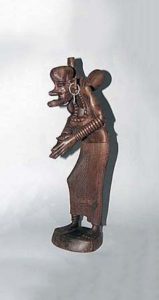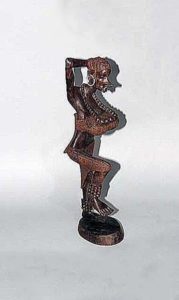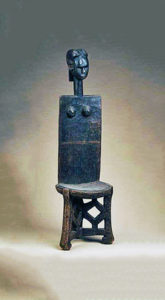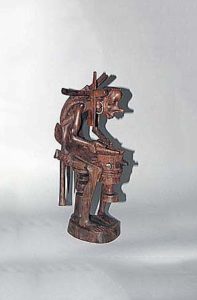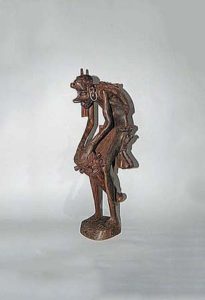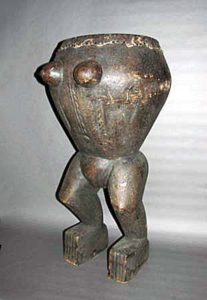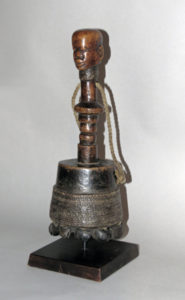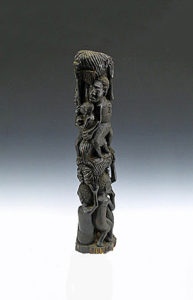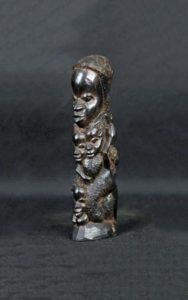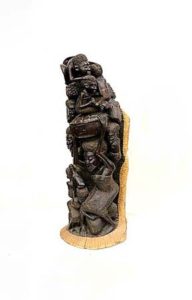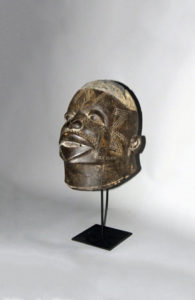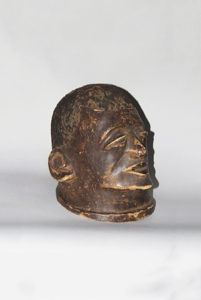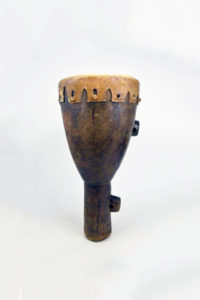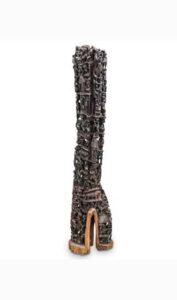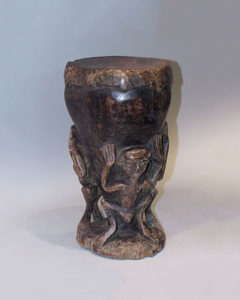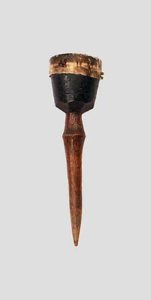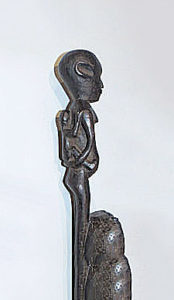Makonde
The Makonde people belong to the Bantu people who originally lived in the south of Lake Nyassa and later migrated to their present location on the Mueda plateau in northern Mozambique. They survive economically from farming and, occasionally, cattle rearing.
Makonde carvers are prolific producers of masks, statues, and decorative objects.
The most famous Makonde masks are helmet masks which are used to mark a boy’s initiation into adulthood. These masks, called Lipico, have realistic features and are often inset with hair and decorated with wax facial scarifications.
Facial and body masks are usually associated with the Makonde people living in Tanzania.
Makonde sculptures measure from 20 to 80 cm in height, are carved as standing men or women, representing ancestors, and have apotropaic (intended to ward off evil) functions.
Makonde artists like to adorn everyday objects with human faces. The Makonde also made pipes, canes, combs, and bark boxes. Contemporary Makonde artists have achieved a reputation for their human-like ebony figures carved with elongated or distorted features.”
Source:
Baquart, Jean-Baptiste. The Tribal Arts of Africa. New York: Thames and Hudson Inc.

